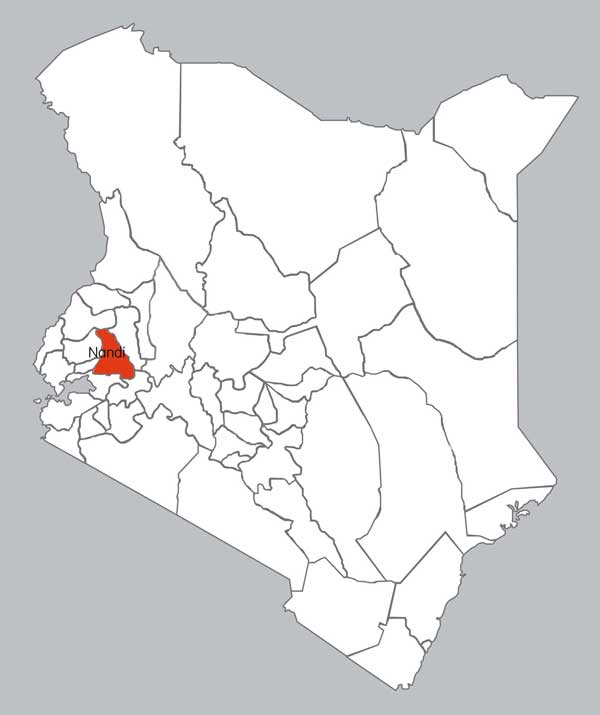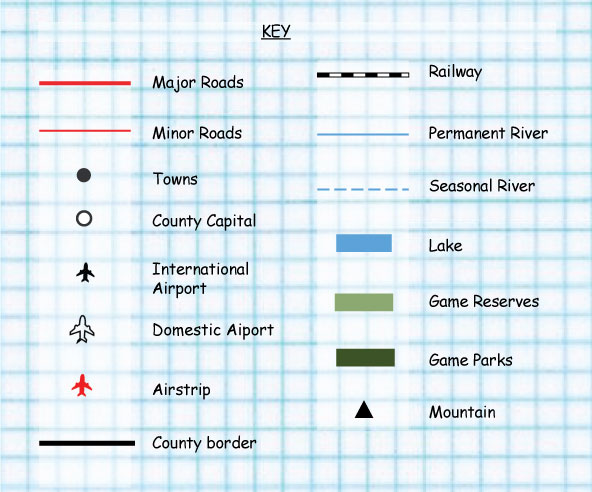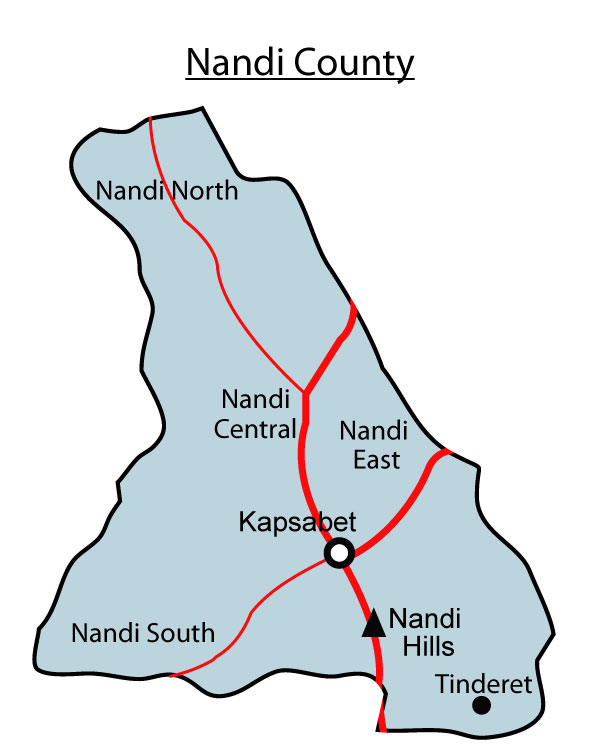The Nandi are part of the Kalenjin ethnic group found in East Africa.
They traditionally have lived and still form the majority in the highland areas of the Nandi Hills in the former Rift Valley Province of Kenya.
They speak the Kalenjin language.


Rivers
Lakes
Hills
Plains
Valleys


Language groups
Areas of high population density
Areas of low population density
Food
Dressing
Songs and dances
Traditional medical practices
Medicine – Kerichek
Herbs- Sagitiek/Ndorenik/kiptoloshwaTraditionally there were medicine(kerichek) or Herbs (sagitiek, ndorenikor kiptoloshwa) most of the herbswere extracted from trees (ketik), shrubs (sondit or timwek or ndororet) The following parts of plants were commonly used.
Baby naming takes place in the mother's hut while the men, who have been kept in the dark regarding the baby's sex, wait outside.
The mother and attending women call a spirit's name to watch over the baby.
The baby is supposed to sneeze to indicate that the name has been accepted. Snuff "helps" the sneezing amid the women's laughter!
There are intervals interspersing the women's laughter, which the men, waiting outside, can count as an indication of whether the baby is a girl or a boy.
In Nandi traditions, the original name that a child receives is used until another substitute name, birth-related and selected by the mother, is given a few days later.
During initiation the initiates were taken to the nearby bush where a grass thatched hut had been set up for them. They would stay there and continue getting advice from the person who had been chosen to look after them.
Parents prepared and took food to the bush for all the initiates. Food was brought in turns and it had to be for all the initiates.
Boys had to move around the bush killing birds and wild animals which they would show when they came out of the bush.
A special rag was used to carry the killed animals and birds displaying them to the community members.
If one failed to kill any wild animal or bird it was taken as if he had not been ready for the rite of passage but according to Sangok, almost all the initiates managed to kill at least a bird or an animal.
They also practiced female circumcision
Harvest ceremonies were held in September and October respectively to mark the change in Seasons
There songs were performed rather than sang so they had a lot of body movement and style. There was occasions for solo performance for example lullabies. Many songs consist of phrases and verses which were sung by different people.
Every time they had an occasion be it harvest, war, marriage they had more performances that songs. Their songs consisted more of performances where people had to act and move with style.
Main cash crops and food crops grown
Areas where the cash crops are grown
Types of livestock kept
Areas where fishing is practiced
The major forests
Types of wildlife
Avian species
The game parks and reserves
The major tourist attractions
Traditional industries and the products
The major trading centers